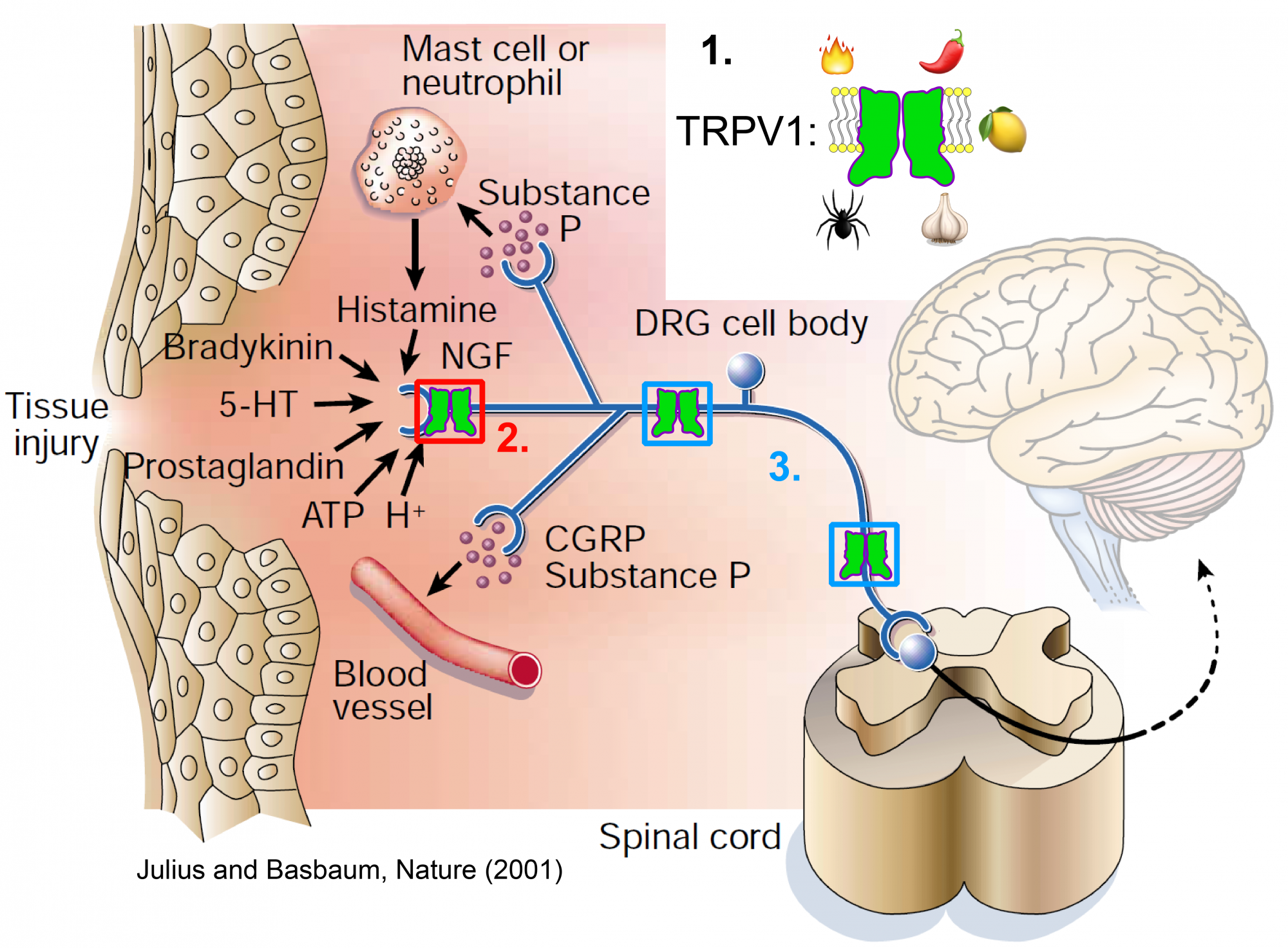The Senning lab focuses on the mechanisms of ion channel regulation in a class of sensory neurons known as nociceptors. For the purposes of framing what motivates our research, the illustration below of a dorsal root ganglia (DRG) nociceptor sensing tissue injury demonstrates several key concerns about the physiology of pain sensation. The brain receives signals from the peripheral nervous system through the spinal cord. Some of these signals come in through the dorsal horn from DRG nociceptors, which extend processes out to the peripheral tissues, where molecular receptors act to change the excitability of the neuron. Because of its role in pain sensation, our research effort is directed at the function of TRPV1, which is a non-selective ion channel expressed in nociceptors.

There are three main concerns raised by this illustration:
- Nociceptors are modulated by a wide variety of sensory inputs. In the case of TRPV1 positive neurons, capsaicinoids, heat, acid and oxidation directly activate gating of TRPV1 to affect the excitability of the nociceptor. The poly-modal activation of TRPV1 beckons the question as to how such a broad set of inputs at near physiological levels can be integrated by the channel to modulate opening and closing.
- Tissue inflammation results in the presences of an inflammatory soup that bathes the nociceptor in signaling molecules that influence the function of TRPV1 both directly (for example through acidity) or indirectly through signaling cascades. Both calcium and phosphatidylinositol 4,5-bisphosphate (PIP2) act as second messengers to influence the function of TRPV1, but the contentious issue is to what degree these act directly on the channel versus through indirect mechanisms such as channel phosphorylation.
- The pseudo-unipolar character of the DRG nociceptor is evident given its branched axon and absence of any post-synaptic structures. This presents an interesting problem since an organizational polarity is lacking that would place TRPV1 at the periphery of the nociceptor. Our research has identified a mechanism for TRPV1 recruitment to sites where increased activity of the mobile ion channel limits its movement, acting as a diffusion trap.
